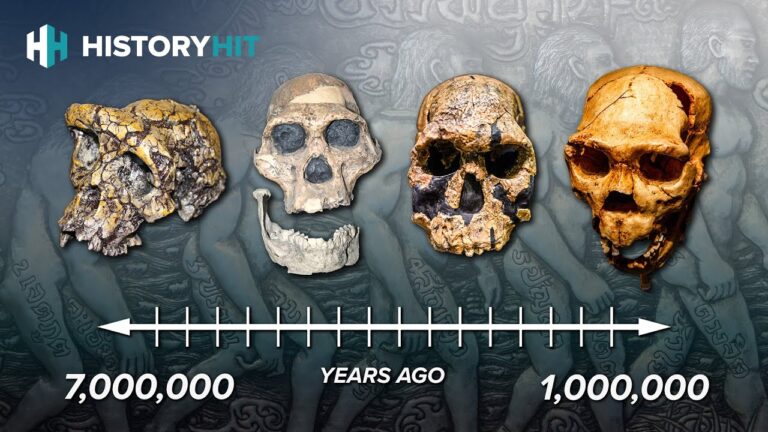Lucrative Data Analyst Jobs: High Salary & Exciting Roles

Data Analyst Job Description Template
Data Analyst Job Description A Data Analyst is responsible for collecting, organizing, and analyzing large datasets to provide valuable insights and support decision-making processes within an organization. They play a crucial role in understanding complex data patterns, identifying trends, and translating data into actionable recommendations. The main responsibilities of a Data Analyst include gathering and cleaning data from various sources, such as databases, spreadsheets, and APIs. They then use statistical techniques and data visualization tools to analyze and interpret the data. This involves creating reports, graphs, and dashboards to present findings to stakeholders. Another important aspect of a Data Analyst’s role is identifying and communicating trends and patterns to support strategic decision-making. They work closely with cross-functional teams, including business analysts, data scientists, and executives, to develop data-driven solutions and strategies. To excel in this role, a Data Analyst should have strong analytical skills, as well as proficiency in programming languages such as Python or R. They should also be familiar with database management systems and data visualization tools, such as SQL and Tableau. Additionally, attention to detail, critical thinking, and effective communication skills are essential. In summary, a Data Analyst plays a vital role in transforming raw data into meaningful insights that drive business decisions. They are responsible for collecting, analyzing, and interpreting data to support strategic planning and improve overall organizational performance.Data Analyst Responsibilities
Data Analyst Requirements
How Much Does A Data Analyst Make?
Data Analyst Salary
| Job Title | Salary |
|---|---|
| Data Analyst | $60,000 – $100,000 |
A Data Analyst is a professional who analyzes data and provides insights to support decision-making processes within an organization. They are responsible for collecting, organizing, and interpreting data to identify trends, patterns, and correlations that can assist in improving business performance and efficiency. Data Analysts are in high demand due to their crucial role in helping companies make data-driven decisions. The salary range for a Data Analyst typically varies based on factors such as experience, location, and industry. Entry-level positions may start around $60,000 per year, while experienced Data Analysts can earn up to $100,000 or more annually.
Data Analyst Salaries by Country
Top Paying Countries for Data Analyst
| Country | Average Salary (USD) |
|---|---|
| United States | $90,000 |
| Australia | $80,000 |
| Switzerland | $75,000 |
| Canada | $70,000 |
| United Kingdom | $65,000 |
Data analysts are in high demand globally, and their salaries vary significantly across different countries. According to recent data, the top paying countries for data analysts are the United States, Australia, Switzerland, Canada, and the United Kingdom. The United States leads the pack with an average salary of $90,000, followed by Australia with an average salary of $80,000. Switzerland offers an average salary of $75,000, while Canada and the United Kingdom provide average salaries of $70,000 and $65,000, respectively. These figures highlight the importance of location when considering a career in data analysis. Factors such as cost of living, industry demand, and local job market dynamics heavily influence salary levels. Aspiring data analysts should carefully research and consider these factors when deciding where to pursue their careers.
A video on the topic Data Analyst
Video Source : Learn with LukasInterview Questions for Data Analyst
1. What is the role of a data analyst?
A data analyst is responsible for collecting, organizing, and analyzing large sets of data to identify patterns, trends, and insights that can help businesses make informed decisions. They use various statistical techniques and tools to interpret data and present their findings in a meaningful way.
2. What programming languages and tools do you commonly use as a data analyst?
As a data analyst, I commonly use programming languages such as Python and R for data analysis and manipulation. I also use tools like SQL for database querying, Excel for data cleaning and visualization, and Tableau for creating interactive dashboards and reports.
3. How do you approach analyzing a large dataset?
When analyzing a large dataset, I first start by understanding the data and its structure. Then, I break down the analysis into smaller, manageable tasks and set specific objectives. I clean and preprocess the data, perform exploratory data analysis to identify patterns and outliers, and apply appropriate statistical methods or machine learning algorithms to extract insights from the data.
4. Can you explain the process of data cleaning?
Data cleaning involves identifying and correcting or removing errors, inconsistencies, and inaccuracies in a dataset. The process typically includes tasks such as handling missing values, removing duplicate records, standardizing data formats, and dealing with outliers. Data cleaning ensures that the dataset is accurate, complete, and ready for analysis.
5. How do you ensure the quality and integrity of data during analysis?
To ensure the quality and integrity of data during analysis, I follow a few key steps. Firstly, I validate the data by checking for completeness, accuracy, and consistency. I also conduct data profiling to understand the distribution and characteristics of the data. Additionally, I document any transformations or modifications made to the data and perform regular data audits to identify and resolve any issues.
6. How do you handle missing or incomplete data?
When dealing with missing or incomplete data, I first try to understand the reason behind the missing values. Depending on the context, I may choose to remove records with missing values, impute the missing values using statistical techniques like mean or median, or use advanced imputation methods such as regression or multiple imputation. The choice of approach depends on the dataset and the specific analysis requirements.
7. How do you ensure the privacy and security of data as a data analyst?
As a data analyst, I prioritize the privacy and security of data by following best practices and adhering to relevant regulations. I ensure that sensitive data is anonymized or masked, and access to data is restricted to authorized personnel only. I also use encryption techniques to protect data during transmission and storage. Additionally, I regularly update and patch software and systems to prevent any vulnerabilities.
8. Can you explain the concept of data visualization and its importance in data analysis?
Data visualization involves representing data in visual formats such as charts, graphs, and maps to facilitate easier understanding and interpretation. It helps in uncovering patterns, trends, and relationships in the data that may not be immediately apparent in raw numbers or text. Data visualization is important in data analysis as it enables effective communication of insights to stakeholders and supports data-driven decision-making.
9. How do you handle working with stakeholders who have limited data literacy?
When working with stakeholders who have limited data literacy, I focus on simplifying complex concepts and findings. I avoid using technical jargon and explain data analysis results in a clear and concise manner. Visualizations and storytelling techniques are also helpful in conveying insights effectively. I encourage questions and provide additional support or training as needed to improve stakeholders’ understanding of the data.
10. Can you describe a challenging data analysis project you have worked on and how you overcame it?
One challenging data analysis project I worked on involved analyzing customer behavior and preferences using a large dataset from multiple sources. The data was messy and required extensive cleaning and preprocessing. I had to collaborate with different teams to gather additional information and align the data formats. To overcome the challenges, I developed a detailed data cleaning plan, used Python for automation, and created visualizations to communicate the insights effectively. Regular communication with stakeholders and continuous iteration helped in successfully completing the project.






